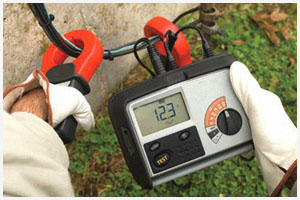
The main purpose of earthing is to ensure that the electric current passes over the ground line which is less resistant than the people, and eliminates the danger of impact in the event of an electrical leakage in any vehicle operating with electrical energy.
The term "electrical grounding" refers to the method of transferring the leakage current to the ground by means of conductor, despite the dangerous situations, of the bodies of the vehicles operating with electrical energy. In order for the system to function properly, the resistance from the soil to the body of the vehicle should be low.
In the event of a fault, earthing facilities are installed in the electrical networks in order to transfer the short-circuit currents to the ground in such a way as not to cause life-threatening. The calculations to be made and the grounding structure to be designed must be accurate and complete when the electricity is in question.
In order to eliminate the vital dangers against high voltage caused by high contact, protection grounding is made to the grounding in high voltage plants. The main point here is the connection of all electrical vehicles which can remain under voltage in a negative situation but which do not belong to the operating circuit and which can come into contact with the earth to the earthing device with a conductor.
In the case of electricity-based plants, electric power plants, which are extremely dangerous in terms of occupational safety, are the facilities that generate, accumulate, transmit, distribute and convert them into mechanical energy, light, chemical energy and similar energies.
With these qualities they possess, they can be dangerous for people, other creatures and objects in situations such as approaching or touching. Phases with an effective value of 1000 volts and less are defined as low voltage, and phases above this value are defined as high voltage. The voltage with an effective value over 50 volts at low voltage and varying depending on the fault duration in high voltage is considered dangerous.
In order to apply the essential and vital grounding method in the electrical networks of the facilities, the relevant ministry has published a Grounding Regulation in Electrical Installations. The relevant regulation has been prepared for the purpose of establishing, operating and controlling earthing facilities for alternative current and direct current electrical installations with a frequency below 100 Hz and to ensure safety in terms of life and property safety.
Since high voltage electrical installations and low voltage electrical installations have different characteristics, the grounding methods and the grounding rules of computing and communication equipment related to these electrical installations are discussed in separate sections.